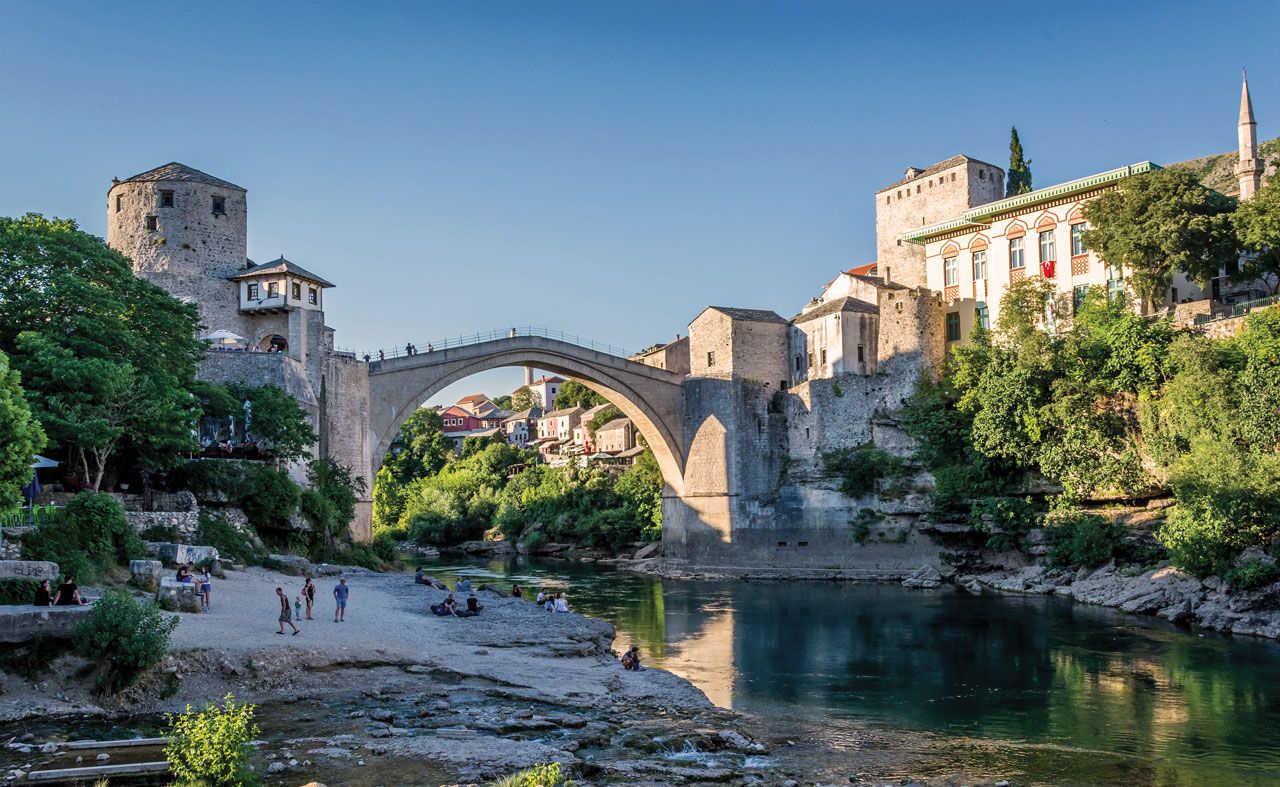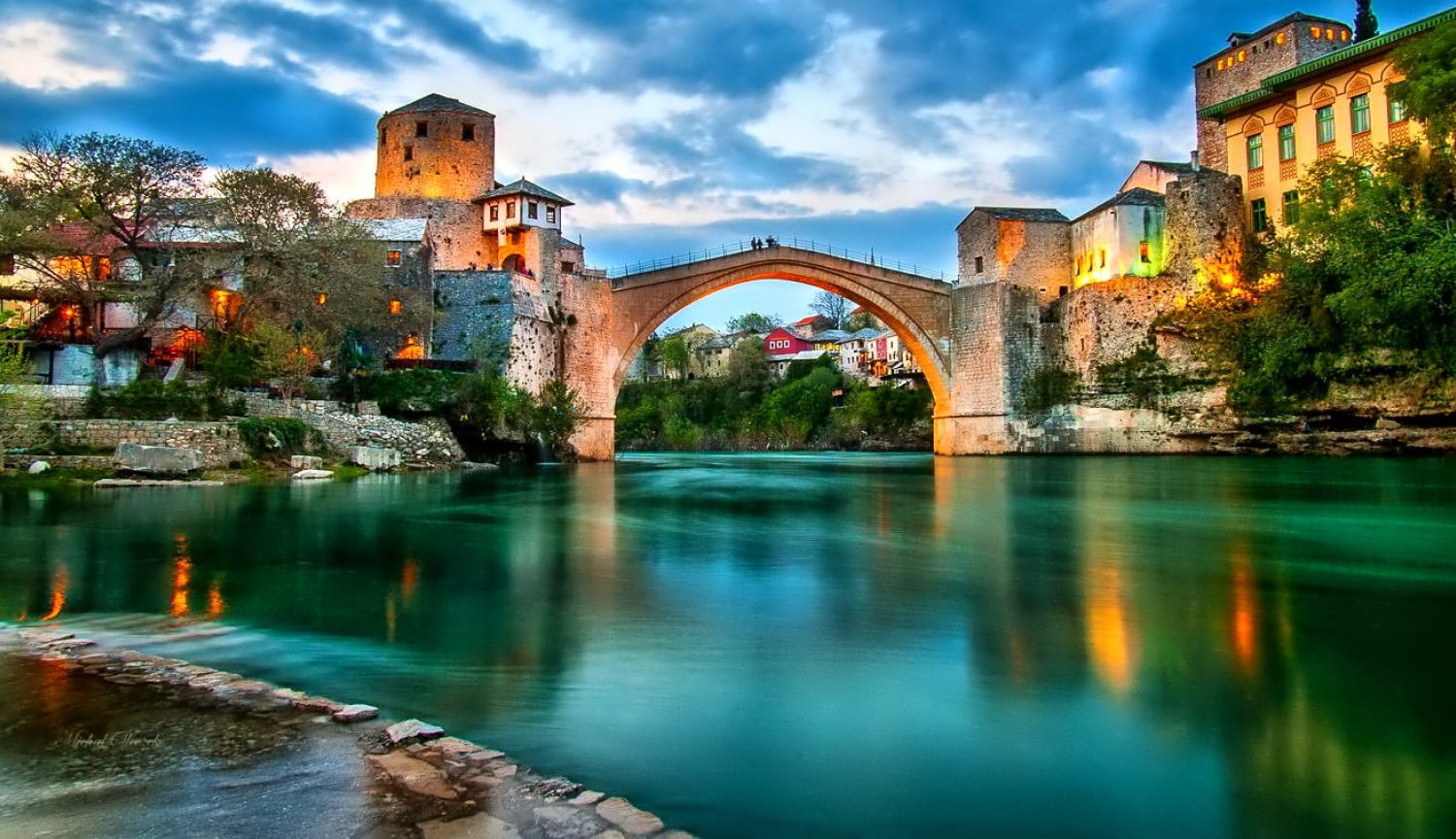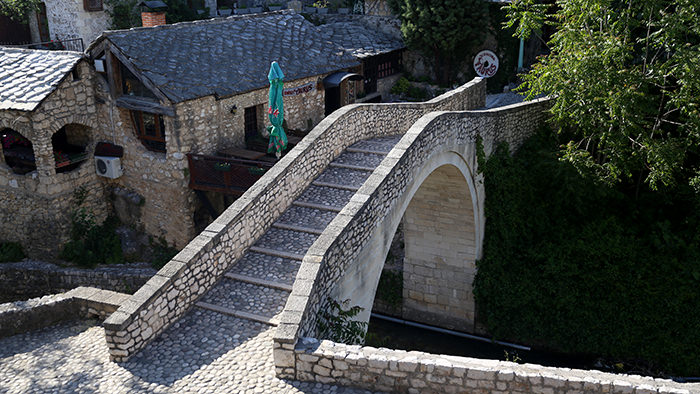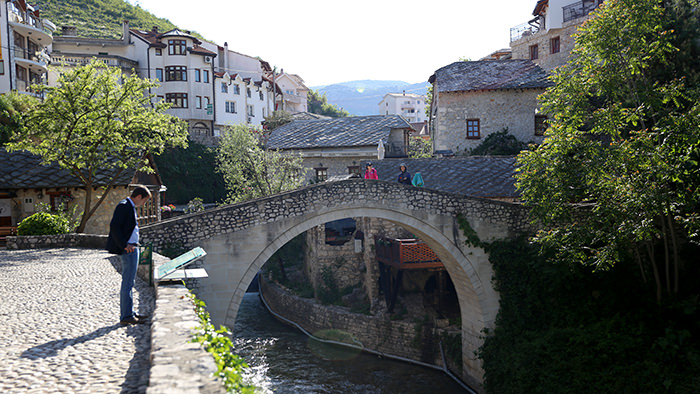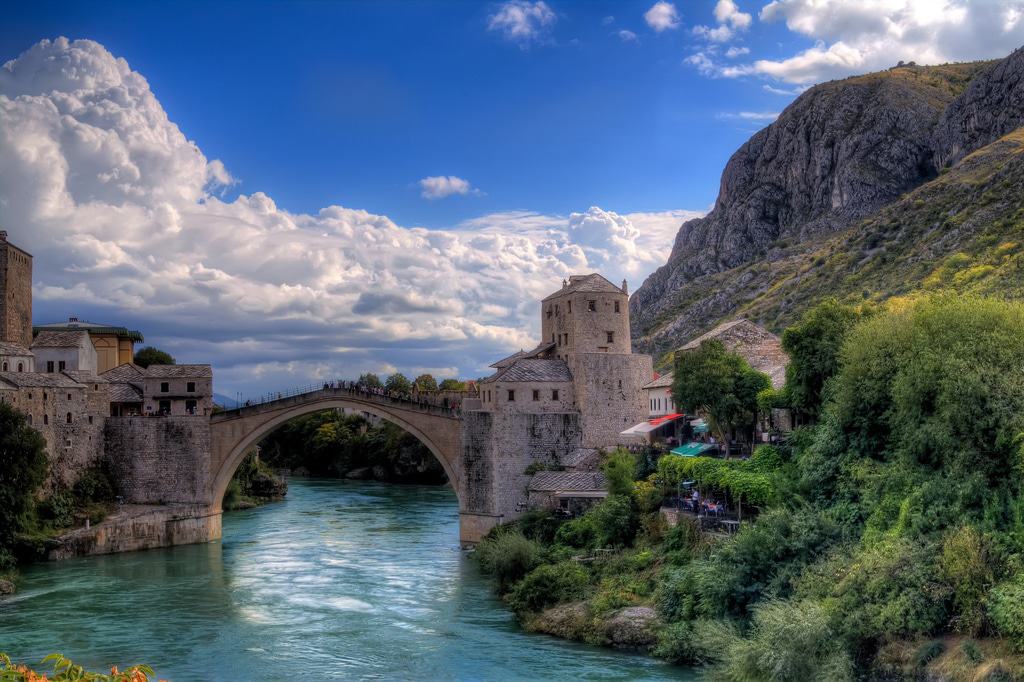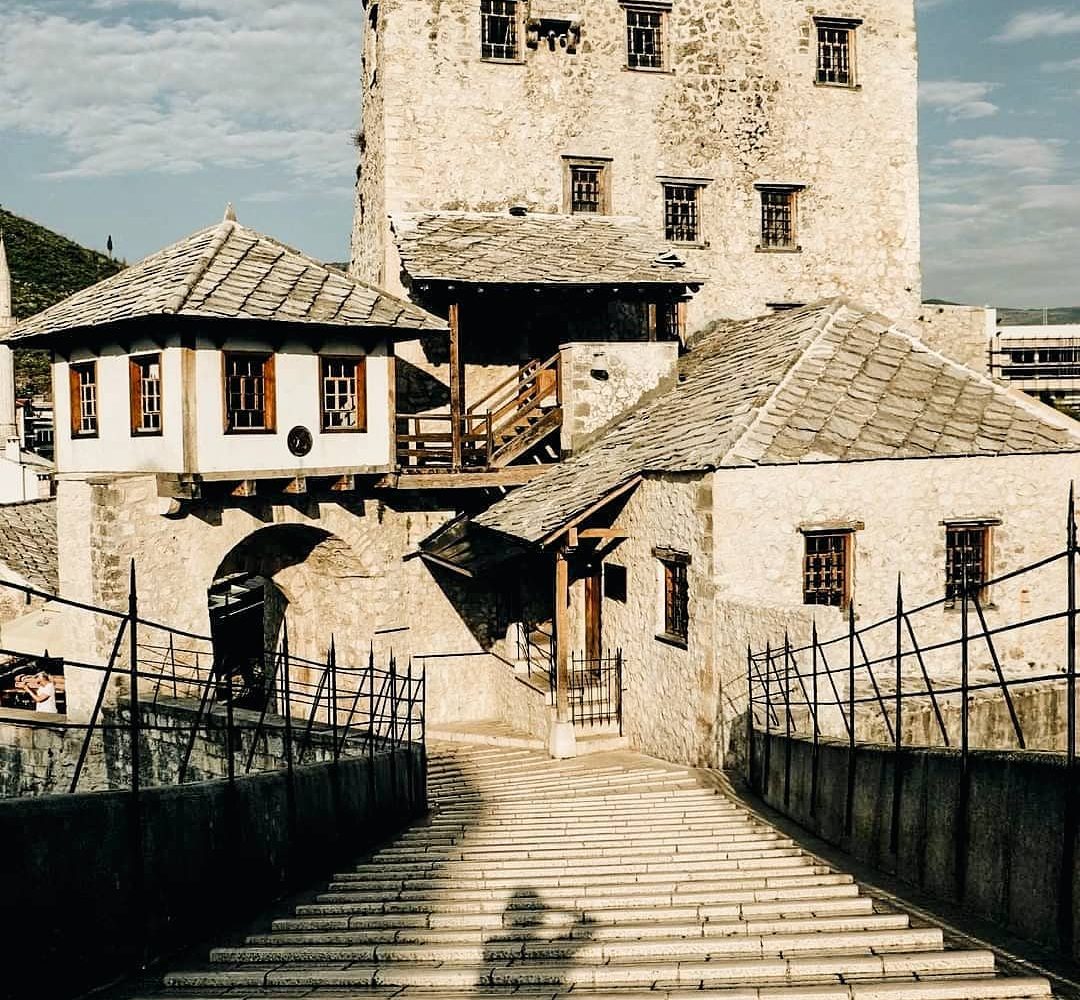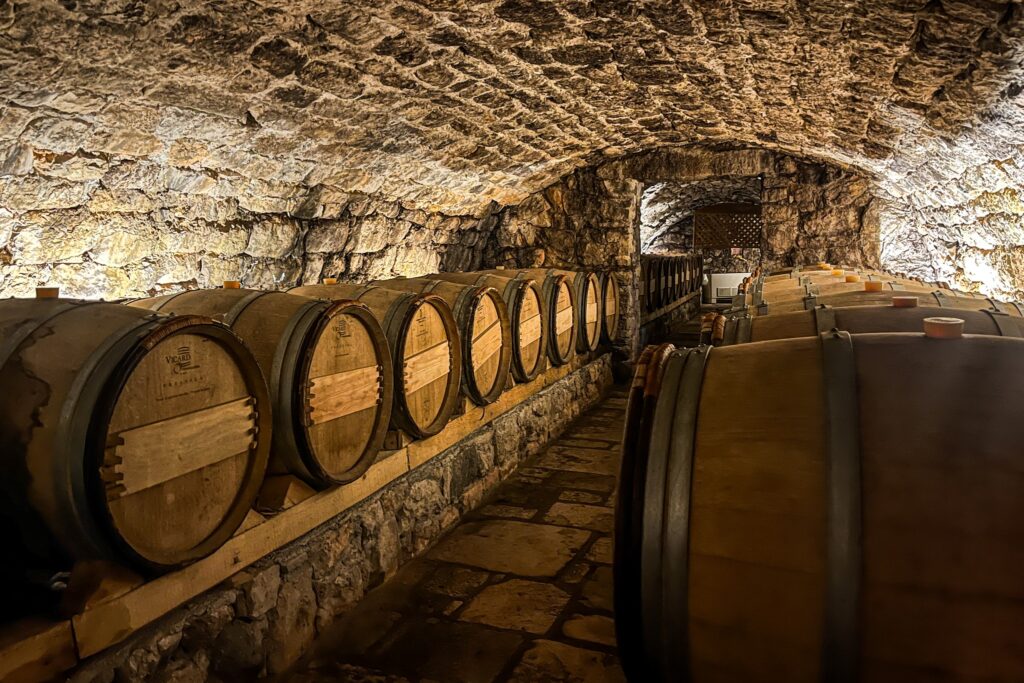Mostar City Tour is unique experience for those who seek something more. It takes you to the most important site of Mostar’s history: Ottoman Old Town, Austro-Hungarian promenades and Yugoslavian huge residential blocks. Our visitors will learn about town’s history, lifestyle, cultural and religious influences. Mostar City Tour also takes you to the most important sites of the war of 1990’s.
Understanding Mostar’ rich history is not fully possible without reaching out of Old Town’s core. Mostar City Tour takes you on a journey through time: from mysterious era of Ottoman Empire and Austro-Hungarian romantic fin de siècle to socialist realism of Yugoslavia. While walking through the cobblestone streets, under the shades of plane trees or war-torn financial district, one will experience dramatic shifts in world’s history and their influence on a town which has both thrived and suffered throughout its existence, yet preserved its own way of life. Mostar City Tour takes you to the most significant monuments of Mostar’s history, from early 16th to late 20th century.
Visit Stari Most, the Old Bridge in Mostar that dates back to the 16th century and learn about it’s rich history. The Old Bridge Area is a unique cultural experience filled with history, local food and Bosnian souvenirs.
Know before you go
- Duration: 2h
- Available languages: English
- Recommended: min. 3 persons
- For a full refund, cancel at least 24 hours in advance of the start date of the experience
- Service animals allowed
- Near public transportation
- Most travelers can participate
- This is a private tour/activity. Only your group will participate


